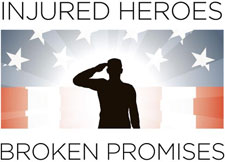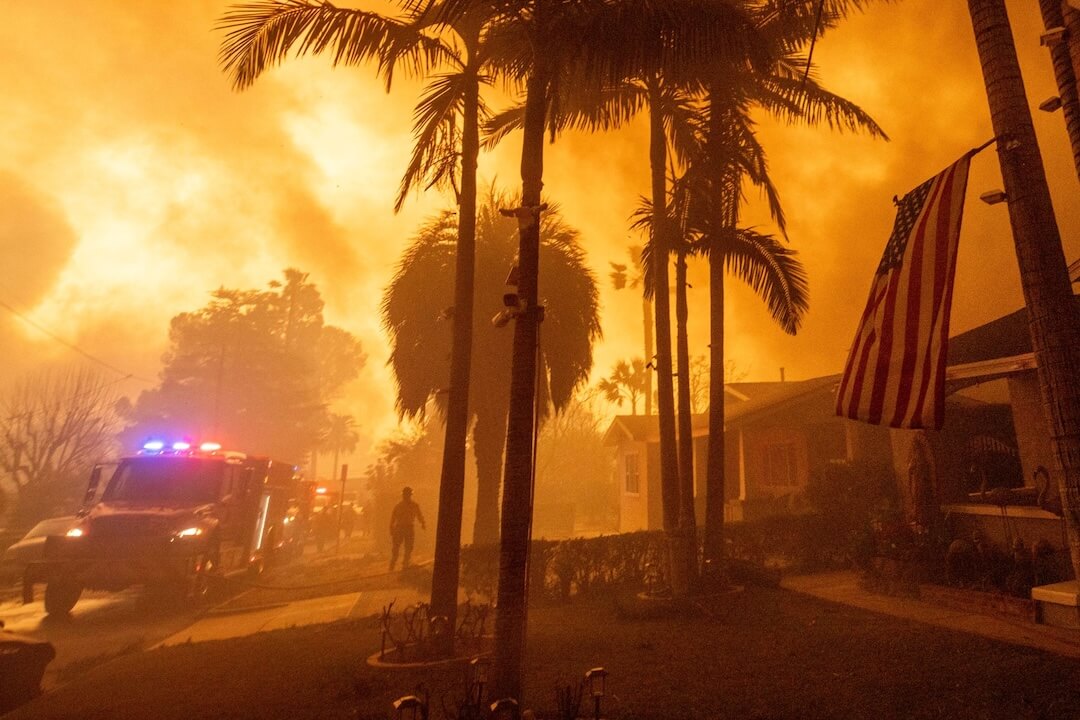Dallas TV station KXAS (NBC5) and the Dallas Morning News teamed up to investigate complaints of harassment by hundreds of soldiers at the Army’s Warrior Transition Units (WTU’s) that were designed to help the injured heal. In the process of documenting the poor treatment of Army veterans these separate media outlets learned about how to work together.
The story
The project, called “Injured Heroes, Broken Promises,” took more than six months of work, relied on hundreds of pages of government records and interviews with dozens of injured veterans who said they had been “ridiculed, harassed and threatened by the commanders of Army units created to help injured soldiers heal.
Three of the nation’s 25 WTU’s’s are in Texas. The units are supposed to manage the care and treatment of wounded, ill or injured soldiers, whether they are physically or mentally injured, or both. 64,000 soldiers have used the treatment programs since 2007. “Hundreds of America’s active duty soldiers have complained about harassment, verbal abuse and mistreatment at the Army’s Warrior Transition Units that were designed to help the injured heal,” according to the investigation.
The team examined five years of complaints involving soldiers from three Texas Warrior Transition Units at Fort Hood, Fort Bliss and Fort Sam Houston. The story produced a hefty 210 inch 5600-word display in the newspaper, two interactive web displays and a nearly 10-minute local TV story on a Sunday night newscast followed by a nearly seven minute piece on Monday.
One of the key interviews in the project was with Sgt. Zach Filip, an Army combat medic who served in Afghanistan. He returned to the States suffering from post-traumatic stress disorder only to be re-traumatized by the 2009 shooting that killed 13 people at Ft. Hood. Filip saved the life of a police officer in that incident and The Army Times named him the 2010 Soldier of the Year. Filip said the WTU he was assigned made his problems “a lot worse, physically and mentally.”
KXAS’s Website
The Dallas Morning News website
Key lessons of a partnership
The team also valuable lessons about how to work across platforms and even across ownerships to produce the investigation. Among the lessons they say they learned:
Share everything. If you are going to be partners, you have to commit to the idea and hold nothing back.
Negotiate the release. Newspapers and TV stations have different cycles and a Sunday release might not be what a TV station would choose but it is perfect for newspapers. There’s also the online release, this team broke the first round of stories online, a day before the material appeared in print or on the air.
Visit each other’s newsrooms. Get to know the cultures your partner lives in. It is also a show of respect when you “go to them” as much as “they come to you.”
Share bylines. The contributors show up on all platforms. It honors each other’s contributions. It might sound small but it isn’t.
Stay open. Both the newspaper and TV journalists in this project said their partners made useful suggestions about content and style that each adapted. The partners said the other media’s “fresh set of eyes” made the stories sharper.
It’s a lot more work. This is one consistent phrase I have seen over the years with the many combined projects Poynter.org has examined — partnerships require more work than going it alone. Partnerships require roughly twice the communication, scheduling headaches and you negotiate everything that you normally would not have to from the title of the project to when to roll it out and how. But, as you will read below, the partners say the additional work is not only worth it, it has been key to reaching audiences, landing interviews and maybe getting results. So much so, the partners are already planning the next project.
Choosing the journalists
Both KXAS and The Dallas Morning News said “who” does the job is nearly as important and “what” they will be investigating. The journalists had to be able to share information and credit. They had to be willing to allow their partner to publish first and they had to be willing to allow others to critique, edit and suggest ways to improve stories. It is not for everybody.
I talked with team members of the team by phone and email.
KXAS/NBC5 investigative reporter Scott Friedman and investigative producer Eva Parks have covered other stories about the treatment of veterans. Friedman has been honored for his aggressive use of public records to prove his stories. Parks and Friedman met some of the first sources for this story during their reporting of the aftermath of a 2009 shooting at Ft. Hood. They filed their first open records requests for this project more than a year ago.
The Dallas Morning News provided Dave Tarrant, an experienced narrative storyteller who has written extensively on soldiers returning from war.
Tom Huang, the DMN Sunday and Enterprise Editor said, “Dave was the lead writer on the newspaper stories, but Scott and Eva’s reporting was so integral to the stories that we knew we wanted to give them bylines – there was never a question in my mind. They also had a lot of feedback for Dave when he showed them early drafts. He did quite a bit of rewriting of the second day’s main story based on some ideas Scott had.”
Why form a partnership with another media outlet?
Parks: “We knew that we wanted to do a partnership investigation when the partnership formed a year ago. We had filed a Freedom of Information request with the Army June 2013. When we finally got word this summer that we were getting closer to receiving the records we thought this would be the perfect joint project for us to present to the Morning News. We weren’t exactly sure what type of records we’d get but we knew it would be voluminous and when they assigned Dave Tarrant we were excited because of his strong military background that he’d add an extra layer of reporting.”
“Doing a story like this with a print partner brings your story to a whole new audience. It was exciting to start receiving feedback before the report aired because of the buzz created by releasing Dave’s version in the Sunday paper. The print version also goes into more depth that a TV report could never do.”
Tarrant: “To begin with, collaboration is a major value in itself. Instead of just sharing each other’s finished products, we had a chance to work together, share insights, develop reporting strategies and discuss storytelling techniques. That kind of collaboration leads to creative ideas and new ways of thinking about stories. In no small way, a partnership like this can begin to change the culture at the institutional level. In a digital world, that kind of fundamental change, if done right, is a very good thing. At the team level, Scott and Eva are battle-hardened investigative reporters, very organized and able to focus like a laser beam on the key issues. I learned a lot working with them, and I tried to bring my experience in reporting and writing narratives to look for ways to tell the story through central characters.”
Friedman: “Our investigative team had already filed a FOIA request asking for the Army documents – and we had talked with several families who had concerns about treatment they received in these units – prior to us approaching the DMN with the idea. But they were on board before we shot any interviews and before we received the FOIA records. So Dave was involved in conducting all of the interviews and examining the records with us.”

Eva Parks, Dave Tarrant, Scott Friedman (Left to -Right). Each document represents a complaint filed by a solider about treatment at an Army Warrior Transition Unit.
The Logistics
Huang: “Injured Heroes, Broken Promises” was our first major investigative project that we collaborated on. We worked as a true team from the beginning, sharing ideas, going to planning meetings, mapping out what the print, digital and broadcast stories would cover. Dave, Scott and Eva did all their reporting together, sharing all their notes and documents. I shared drafts of Dave’s stories with Executive Producer Shannon Hammel, Scott and Eva; and Shannon shared Scott’s scripts with Dave and me. Our lawyer and their lawyer read all of DMN’s stories and NBC5’s scripts ahead of time. We even had a session where we all got together to brainstorm the name of the series, “Injured Heroes, Broken Promises,” and the hashtag #InjuredHeroes for Twitter. Dave and I went to planning meetings in NBC5’s newsroom several times over the past few months, and Executive Producer Shannon Hammel visited the DMN’s newsroom pretty much on a daily basis. Having that face-to-face time was really important and helped us feel comfortable in working with one another.”
Friedman: “We agreed in the beginning that everyone would share equal credit. Dave would have producer credit on our TV story – and we would be part of the paper’s reporting team. We spent a lot of time with Dave throughout the project talking about the major findings and discussing narrative for both the TV and the print stories. As we wrote print and TV copy we shared it with each other and offered suggestions and tweaked each other’s work. The biggest challenge was understanding parts of each other’s internal timelines and processes. We held weekly or bi-weekly meetings along the way.”
Joint interviews and shared information
Friedman: “The one major agreement we had from the beginning was that Dave and I would try to conduct every interview together. In most cases the two of us would meet for a phone call with the interview subject before we shot the TV interview. This helped us get more of the details and color we would need for the newspaper story – and helped us prepare for the TV interview. Dave attended all the TV interviews either in person or on speaker phone so he could listen and ask questions.”
Tarrant: “We did nearly all the interviews together, going over what questions to ask. When Scott was filming an interview, I would sit on the side taking notes and wait until he was finished. In some cases, I conducted interviews beforehand, while the KXAS photojournalist, Peter Hull, was setting up equipment. In other cases, I would wait until Scott was done and ask follow-up questions. In a few cases, I called back later to get more details. In a few ancillary cases, we did interviews separately but shared transcripts.”
Huang: “Because Dave is a narrative writer, he also had to spend time hanging out with the soldiers and observing their daily lives, and he did most of that by himself. Vernon Bryant, DMN’s photojournalist, would often visit the soldiers days later, because we didn’t want to have both our photographer and NBC5’s photographer be there at the same time.”
Timing is key and negotiated
The investigation rolled out in waves.
The Dallas Morning News’ website published first, on Saturday. Then the newspaper published on Sunday followed by the in-depth TV story Sunday night following a highly-viewed Dallas Cowboys game on KXAS. Keep in mind, television stations across America are in the midst of the important Nielsen November “sweeps” period” that lasts until November 26th.
The website didn’t include video, at first but did include detailed stories, photos and documents to support the story.
Huang: “We typically post those interactives online on the Friday or Saturday before Sunday’s print publication. Friday is ideal because we capture more online readers then. In this case, we negotiated with NBC5, and they were OK with us posting our online interactive late Saturday afternoon.”
The DMN.com folks added NBC5’s video story and cross-linked to their online package after they aired their story Sunday night.
Friedman: “The two organizations wanted to put the story in front of as many potential eyes as possible. So the combination of a Sunday edition of the DMN – and big Sunday night audience following a Dallas Cowboys game seemed to provide the best. DMN launched Saturday night – releasing the online interactive story and then publishing part one of the series in the early edition of the Sunday morning paper. We aired a preview piece on Saturday night. The full DMN story hit the paper on Sunday morning and we followed with part one of the TV series on Sunday night.”
Measuring success
Huang: “We’re hoping our stories will get the attention of lawmakers and policy folks who focus on how soldiers are cared for when they return home from war. It will be meaningful if some change happens for the better, and if the Army seeks to improve these Warrior Transition Units. Of course, it would be nice to get good newspaper sales, online page views and broadcast ratings. But I think the project has already been a success, because this was the first time that DMN and NBC5 partnered on a major investigative project, and we were able to make it work really well. NBC5’s Executive Producer Shannon Hammel and I are already talking about what we’d like to do next.”
Parks: “For us, doing a report like this is all about making a difference and shedding light on how the Army cares for injured soldiers. The people we talked to were brave to share their story with us and we hope the report will lead to some positive changes so that other soldiers may not have to go through that type of experience again.”
Tarrant: “It’s been seven years since The Washington Post broke the stories that have come to be known as the “Walter Reed scandal.” Since then, we haven’t heard much about the program that was set up in the wake of that scandal. We’re hoping that our stories draw attention to the fact that there are still problems with how the Army cares for its wounded and ill soldiers when they return home from war. We hope the stories will help lead to changes that will improve this vital program.”
The team said that it is still awaiting more than 6,000 additional pages of documents from the federal government and that already it is following up on additional leads from veterans and families who have stories to tell.
“We have heard from the families we covered,” KXAS’ Eva Parks said. “They said they were pleased with the coverage and they thanked us for listening.”











Comments